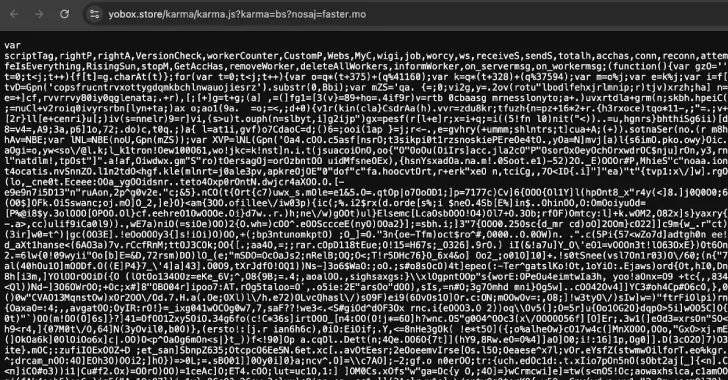
3,500 Websites Hijacked to Secretly Mine Crypto Using Stealth JavaScript and WebSocket Tactics
The Silent Threat: 3,500 Websites Hijacked for Covert Crypto Mining
The digital landscape is a constant battleground, and a recent development has sent a stark reminder: browser-based cryptojacking is back, bolder and stealthier than ever. A new attack campaign has compromised over 3,500 websites globally, injecting malicious JavaScript to secretly mine cryptocurrency from unsuspecting visitors. This sophisticated operation marks a significant resurgence of a threat once thought mitigated, employing advanced stealth tactics, including WebSockets, to evade detection. For IT professionals, security analysts, and developers, understanding this evolving threat is paramount to protecting both organizational assets and user trust.
Understanding Browser-Based Cryptojacking 2.0
Browser-based cryptojacking, at its core, involves malicious code running within a user’s web browser to mine cryptocurrency without their consent. The concept gained notoriety with services like CoinHive, which allowed websites to monetize traffic by having visitors contribute their CPU cycles to cryptocurrency mining. However, after persistent efforts by browser makers to ban miner-related applications and add-ons, CoinHive ultimately shuttered.
This new campaign, however, demonstrates a significant evolution. Researchers from ‘c/side’ have identified a highly stealthy approach. Unlike previous iterations that might have been easily flagged by ad blockers or browser extensions, these new attacks leverage sophisticated obfuscation and WebSockets. WebSockets provide a persistent, two-way communication channel between the client (browser) and the server, making it an ideal conduit for low-profile, continuous data transfer, which is precisely what covert crypto-mining operations require. This tactic allows the malicious script to communicate with the mining pool server without relying on typical HTTP requests, which are often more easily monitored and blocked.
The Mechanics of the Attack: Stealth JavaScript and WebSockets
The attack vector primarily relies on injecting malicious JavaScript into legitimate websites. This injection can occur through various means, including vulnerable content management systems (CMS), compromised ad networks, or even supply chain attacks targeting third-party libraries. Once the JavaScript is loaded by a user’s browser, it initiates the crypto-mining process. What makes this campaign particularly insidious is its use of WebSockets:
- Persistent Connection: WebSockets establish a continuous connection, allowing the mining script to operate efficiently and send mined data back to the attacker’s server without constantly re-establishing connections, which can be noisy and detectable.
- Evasion of Traditional Blocking: Many ad blockers and security solutions are geared towards blocking common HTTP requests to known mining domains. WebSocket traffic, especially when disguised, can bypass these conventional filters.
- Resource Consumption: The mining process consumes significant CPU and sometimes GPU resources on the user’s device, leading to sluggish performance, increased power consumption, and excessive heat generation, often without the user realizing the underlying cause.
While specific CVEs for this particular campaign have not been publicly disclosed, the underlying vulnerabilities exploited to inject the script could range from common web application vulnerabilities like Cross-Site Scripting (XSS) (e.g., CVE-2017-5452 affecting specific WordPress versions, or more general vulnerabilities related to insecure third-party plugins leading to injection) to server-side compromises. The stealth lies not in the injection method necessarily, but in the operational persistence and communication methods of the miner itself.
Impact on Users and Organizations
The implications of such widespread cryptojacking are significant for both individual users and the organizations hosting these compromised websites:
- For Users: Degraded device performance, increased electricity bills, faster battery drain for mobile devices, and potential exposure to further malicious activities if the hijacked websites are also involved in other forms of compromise.
- For Organizations: Reputational damage due to association with illicit activity, potential legal ramifications, increased server load if their own infrastructure is used for hosting the malicious scripts, and a potential loss of trust from their user base. Furthermore, cleaning up a widespread compromise across thousands of web pages can be an arduous and costly process.
Remediation Actions for Webmasters and IT Professionals
Addressing this evolving threat requires a multi-faceted approach, focusing on prevention, detection, and rapid response:
- Regular Security Audits and Penetration Testing: Proactively identify and patch vulnerabilities in your web applications and underlying infrastructure. This should include both manual and automated scans for common web vulnerabilities.
- Content Security Policy (CSP): Implement strong CSP headers to restrict which domains your website can load scripts from and connect to. This is a powerful defense against unauthorized script injection and WebSocket connections. Define strict CSP rules that only allow connections to trusted WebSocket endpoints.
- Strict Input Validation and Output Encoding: Prevent XSS vulnerabilities by rigorously validating user inputs and properly encoding all output displayed on your web pages.
- Regular Software Updates: Keep all CMS, plugins, themes, server software, and third-party libraries updated to their latest versions to patch known vulnerabilities.
- Monitor Web Server Logs: Look for unusual outgoing connections, especially WebSocket handshakes to suspicious domains. A sudden increase in outbound traffic or connections to unfamiliar IPs could be a red flag.
- Client-Side Security Monitoring: While challenging, consider implementing client-side integrity checks or leveraging security features offered by modern browsers (e.g., Subresource Integrity).
- Educate Users: While not a direct remediation for the website, educating users about the symptoms of cryptojacking (slow performance, high fan noise) can encourage them to report suspicious activity.
Tools for Detection and Mitigation
| Tool Name | Purpose | Link |
|---|---|---|
| AcuSensor (Invicti/Netsparker) | DAST/SAST for web application vulnerability detection, including potential injection points. | https://www.invicti.com/ |
| OWASP ZAP | Open-source web application security scanner for identifying vulnerabilities. | https://www.zaproxy.org/ |
| Snyk | SaaS tool for scanning open-source dependencies and containers for known vulnerabilities. | https://snyk.io/ |
| Sucuri SiteCheck | Free online scanner to detect malware, blacklisting, and security errors on websites. | https://sitecheck.sucuri.net/ |
| Browser Developer Tools | Built-in browser tools (Network tab, Console) can help identify suspicious script loads and WebSocket connections. | (N/A – built-in) |
Conclusion: Staying Ahead of the Crypto-Jacking Curve
The re-emergence of large-scale, stealthy cryptojacking campaigns underscores the dynamic nature of cyber threats. The attackers’ pivot to WebSockets and sophisticated obfuscation techniques highlights the need for continuous vigilance and adaptive security measures. For organizations, proactive vulnerability management, robust web application security, and diligent monitoring of network traffic are no longer optional but essential. By prioritizing these security practices, we can collectively work towards a more secure online environment and mitigate the impact of these silent, resource-draining attacks.





